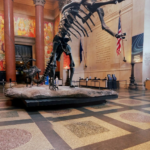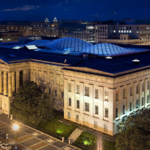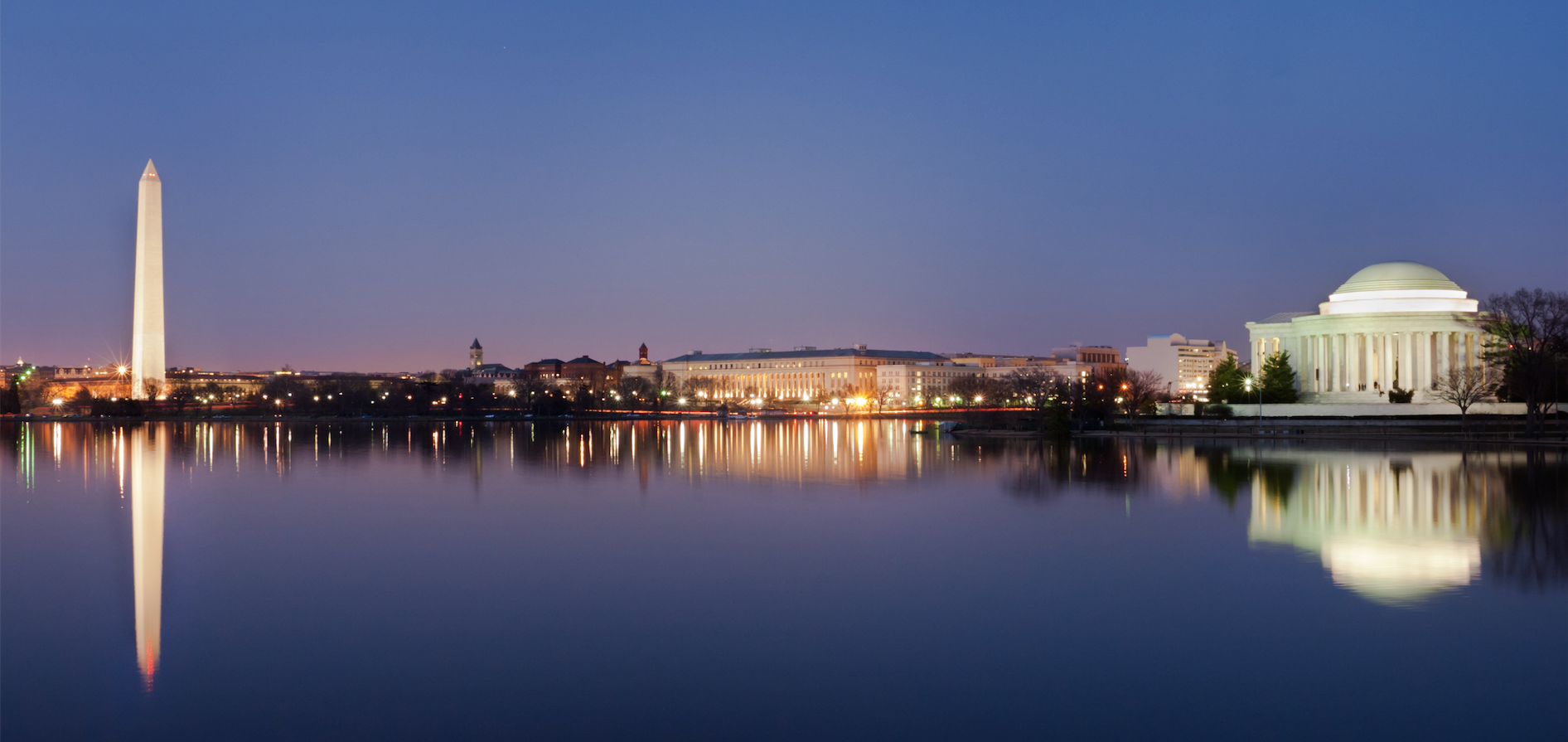

Attractions
Georgetown Waterfront Park

The Georgetown Waterfront Park is a new national park in Washington, DC that was completed in the fall of 2011. Part of the Georgetown Historic District, the park stretches along the banks of the Potomac River from 31st Street, NW to the Key Bridge. The result of many years of advocacy and fundraising, the site features several notable design elements. Now completed, the park links 225 miles (362 km) of parkland along the Potomac River stretching from Cumberland, Maryland to Mount Vernon, Virginia. The park was designed to passively complement the natural curve of the river. Learn more…
Gardens at Dumbarton Oaks
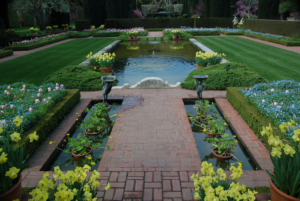
In 1920, after a long and careful search, Mildred and Robert Woods Bliss found their ideal country house and garden within Washington, DC. They purchased a fifty-three-acre property, described as an old-fashioned house standing in rather neglected grounds,
at the highest point of Georgetown. Within a year the Blisses hired landscape gardener Beatrix Farrand to design the gardens. Working in happy and close collaboration for almost thirty years, Mildred Bliss and Beatrix Farrand planned every garden detail, each terrace, bench, urn, and border. Read more…
House of the Temple

The House of the Temple is located at 1733 Sixteenth Street, NW, in the District of Columbia. Designed by famous architect John Russell Pope, this monumental building has served as the national headquarters of the Supreme Council since 1915. The Grand Lodge of the District of Columbia laid the cornerstone in 1911, and the building was completed in 1915. Its architecture is an adaptation of the famous Mausoleum at Halicarnassus, one of the “Seven Wonders of the Ancient World.”
Pope is well known for his other works in the District of Columbia, including the National Gallery of Art, National Archives and the Jefferson Memorial. The House of the Temple was his first major commission in the District of Columbia. He was only 36 years old at the time he signed his contract for the building. Elliott Woods was chosen as an assistant and professional advisor. Learn more…
Vietnam Veterans Memorial
The Vietnam Veterans Memorial was founded by Jan Scruggs, who served in Vietnam (in the 199th Light Infantry Brigade) from 1969-1970 as a infantry corporal. He wanted the memorial to acknowledge and recognize the service and sacrifice of all who served in Vietnam. The Vietnam Veterans Memorial Fund, Inc. (VVMF), a nonprofit charitable organization, was incorporated on April 27, 1979, by a group of Vietnam veterans (John Wheeler, Chairman of the Board for VVMF, served in Vietnam as a captain at U.S. Army headquarters from 1969-1970; Robert Doubek, VVMF project director, then executive director, served in Vietnam from 1968-1969 as an Air Force intelligence officer) in Washington, D.C. Jan Scruggs (President of VVMF) lobbied Congress for a two acre plot of land in the Constitution Gardens. Significant initial support came from U.S. Senators Charles McC. Mathias, Jr. (on November 8, 1979, Senator Mathias introduced legislation to authorize a site of national parkland for the Memorial) of Maryland and John W. Warner (Senator Warner launched the first significant financial contributions to the national fund raising campaign) of Virginia. On July 1, 1980, in the Rose Garden, President Jimmy Carter signed the legislation (P.L. 96-297) to provide a site in Constitution Gardens near the Lincoln Memorial. It was a three and half year task to build the memorial and to orchestrate a celebration to salute those who served in Vietnam. Read more…
World War II Memorial
The World War II Memorial honors the 16 million who served in the armed forces of the U.S. during World War II, the more than 400,000 who died, and the millions who supported the war effort from home. Symbolic of the defining event of the 20th Century, the memorial is a monument to the spirit, sacrifice, and commitment of the American people to the common defense of the nation and to the broader causes of peace and freedom from tyranny throughout the world. It will inspire future generations of Americans, deepening their appreciation of what the World War II generation accomplished in securing freedom and democracy. Above all, the memorial stands as an important symbol of American national unity, a timeless reminder of the moral strength and awesome power that can flow when a free people are at once united and bonded together in a common and just cause. Read more…
Thomas Jefferson Memorial
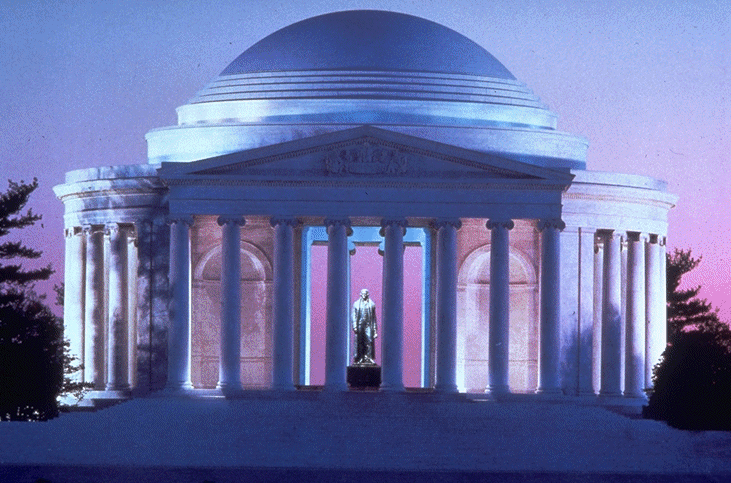
Thomas Jefferson Memorial is a presidential memorial in Washington, D.C. that is dedicated to Thomas Jefferson, an American Founding Father and the third President of the United States. The neoclassical building was designed by John Russell Pope. It was built by Philadelphia contractor John McShain. Construction began in 1939, the building was completed in 1943, and the bronze statue of Jefferson was added in 1947.
The Jefferson Memorial is managed by the National Park Service under its National Mall and Memorial Parks division. In 2007, it was ranked fourth on the List of America’s Favorite Architecture by the American Institute of Architects.
The current site of the Memorial was originally created using landfill dredged from the Potomac River in the late 19th century. It became a popular bathing beach for Washingtonians and other locals.
It became apparent that the site was well suited for another high-profile memorial since it sat directly south of the White House. By 1901 the Senate Park Commission, better known as the McMillan Commission, had proposed placing a pantheon-like structure on the site hosting “the statues of the illustrious men of the nation, or whether the memory of some individual shall be honored by a monument of the first rank may be left to the future”; no action was ever taken by Congress on this issue. Read more…
Thomas Jefferson Memorial is part of the National Mall and Memorial Parks. The site lies at the southern end of the National Mall, adjacent to the Tidal Basin in West Potomac Park. The memorial rests within the sightline to and from the White House, which stands one mile to the north. Directions
Roosevelt Memorial
“The only thing we have to fear is fear itself.” These are the words of our 32nd President, a man who embodied the meaning of the word courage. Despite being stricken with polio at age 39 and paralyzed from the waist down, he emerged as a true leader, guiding our country through some dark times: the Great Depression and World War II. The memorial honors this man, his story, and his era.
The Franklin Delano Roosevelt Memorial is a presidential memorial dedicated to the memory of U.S. President Franklin Delano Roosevelt and to the era he represents. For the memorial’s designer, landscape architect Lawrence Halprin, the memorial site represents the capstone of a distinguished career, partly because the landscape architect had fond memories of Roosevelt, and partly because of the sheer difficulty of the task.
Dedicated on May 2, 1997 by President Bill Clinton, the monument, spread over 7.5 acres (3.0 ha), traces 12 years of the history of the United States through a sequence of four outdoor rooms, one for each of FDR’s terms of office. Sculptures inspired by photographs depict the 32nd president alongside his dog Fala. Other sculptures depict scenes from the Great Depression, such as listening to a fireside chat on the radio and waiting in a bread line, a bronze sculpture by George Segal. A bronze statue of First Lady Eleanor Roosevelt standing before the United Nations emblem honors her dedication to the UN. It is the only presidential memorial to depict a First Lady.
Considering Roosevelt’s disability, the memorial’s designers intended to create a memorial that would be accessible to those with various physical impairments. Among other features, the memorial includes an area with tactile reliefs with braille writing for people who are blind. However, the memorial faced serious criticism from disabled activists. Some of the braille and reliefs were placed well above the reach of even a very tall person, rendering the braille pointless because no blind person could reach high enough to read it. Read more…
Franklin Delano Roosevelt Memorial is part of the National Mall and Memorial Parks. The memorial lies along the southwest shore of the Tidal Basin in West Potomac Park, near the intersection of Independence Avenue, West Basin Drive, and Ohio Drive, SW. More information




